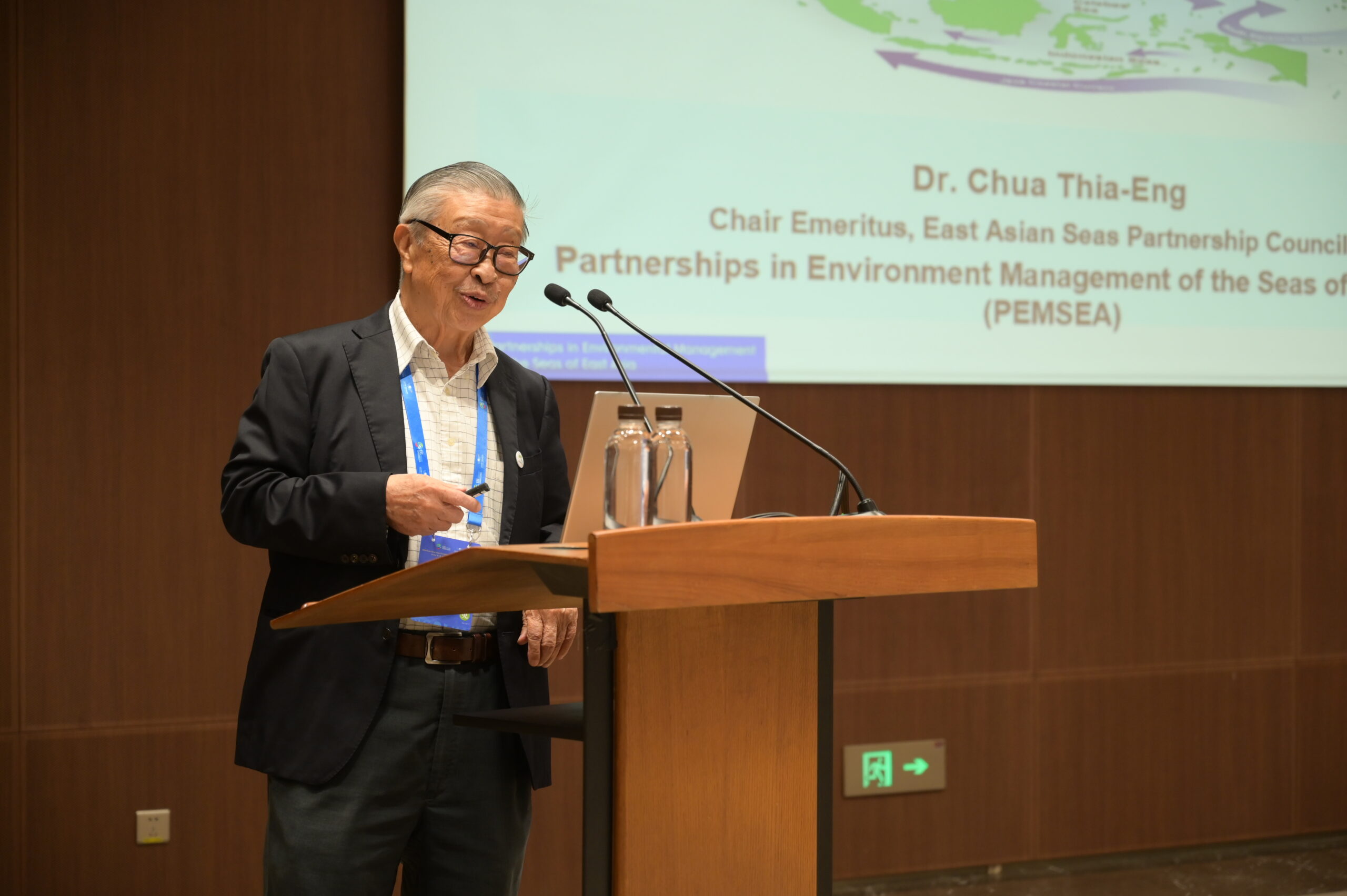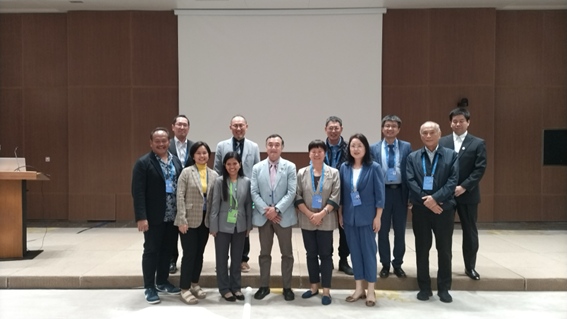ST 1.6

“Commitment and comprehensive collaboration for local stakeholders is needed for more effective ICM implementation,” said Dr. Chua Thia-Eng. “Combining science and local knowledge is effective. Political and financial support from the local government is essential.” (PRF)
“Commitment and comprehensive collaboration for local stakeholders is needed for more effective ICM implementation,” said Dr. Chua Thia-Eng at the session entitled Reinforcing the PEMSEA Network Through a Multi-layered Ocean Governance Methodology, held on day two of the EAS Congress in Xiamen.
There are various definitions of coastal zones, due to different ways of looking at and classifying coastal zones. These can range from geographical perspectives, the delineation of administrative boundaries and analyzing the wide range of human activities. Different international organizations also have different definitions for coastal zones.
This session was held on the second day of the EAS Congress in Xiamen and was led by the former Executive Director of PEMSEA, Dr. Chua Thia-Eng. Dr. Thia-Eng gave a special lecture on ICM implementation methodology, emphasizing the importance of involving local leaders and stakeholders and fostering multi-sectoral cooperation and community involvement.
In Japan, the promotion of ICM in Tokyo Bay is done in close conjunction with stakeholders. Transformation for an inclusive society with citizen engagement is the target of ICM implementation in Tokyo Bay. In the future, it needs to consider a holistic approach, including the compatibility of climate and biodiversity action with a science-based approach. Also, the local-national-regional linkage of actions should be maintained in accordance with global and regional agendas.
In Xiamen, China, the implementation of ICM has significantly increased the annual socio-economic benefits from the marine ecological-economic system. There are six factors in the Xiamen ICM model, including the continuous improvement of the local legal framework, interdepartmental coordination organization with high authority, integrated enforcement mechanisms, science-based decision mechanisms, sustainable financial mechanisms and public participation.
After the ICM has undergone a dynamic process development, Xiamen expanded the scope and functions of ICM on pollution control, conflict reduction and restoration.
In the RO Korea, coastal and marine spatial policy has evolved along with an emphasis on an integrated, evidence-based framework that incorporates community engagement and robust scientific evidence into decision-making processes.
The policy framework addresses critical issues, such as shoreline management, marine biodiversity conservation, pollution mitigation, sustainable fisheries, ocean renewable energy, sand and mineral extraction, port development, plus shipping.
By combining scientific data with local and indigenous knowledge, the policy aims to resolve spatial conflicts, increase transparency and promote stakeholder engagement. Voluntary public participation and legally binding community engagement were emphasized as critical elements for effective decision-making and implementation.
This session is in line with Action 3 of the Xiamen Ministerial Declaration by promoting synergistic approaches in the application of integrated coastal and / or river basin management, integrated pollution reduction and management and utilizing multi-layered ocean methodology for ocean governance.
“Combining science and local knowledge is effective. Political and financial support from the local government is essential,” concluded Dr. Thia-Eng.

Presenters and delegates of the session entitled Reinforcing the PEMSEA Network Through a Multi-layered Ocean Governance Methodology. (PRF)
